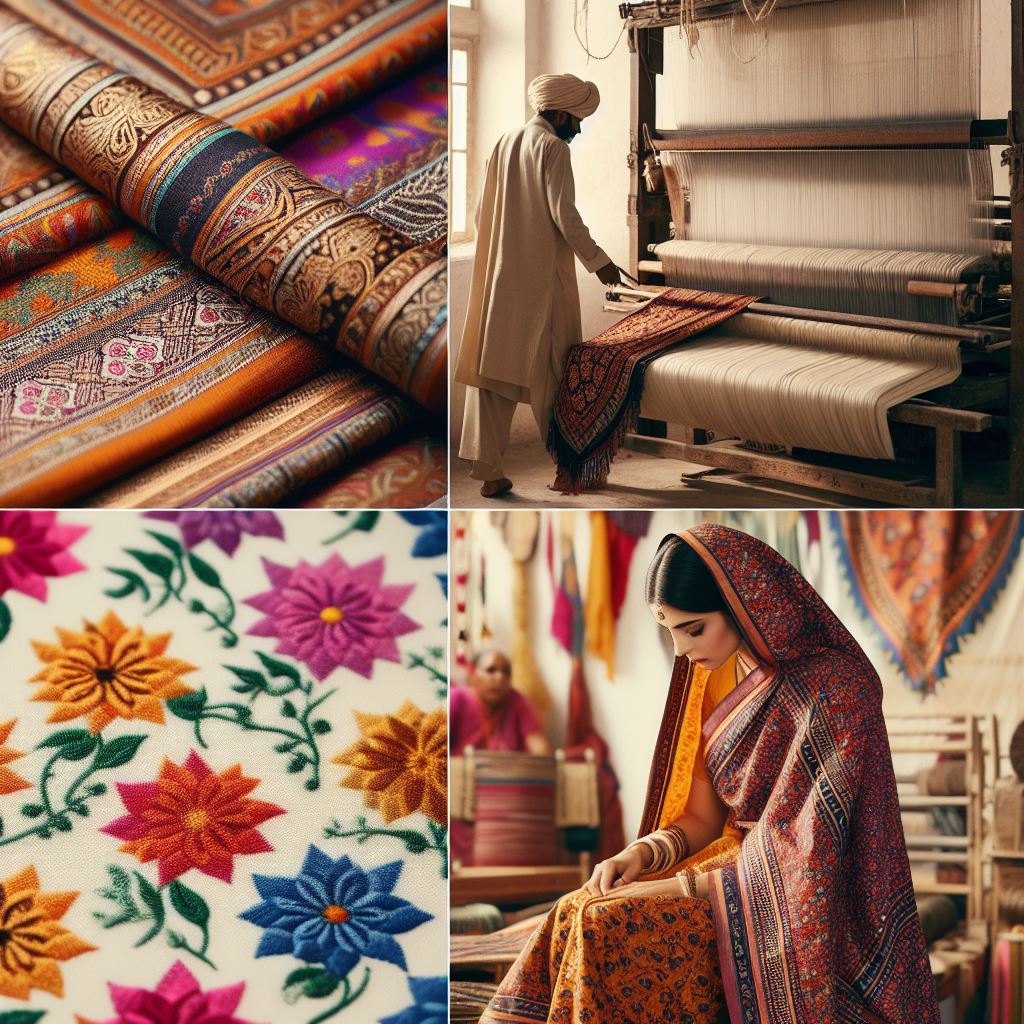India boasts a rich tapestry of Indian textiles, woven with vibrant colors, intricate designs, and centuries-old traditions. These stunning fabrics, far more than just clothing, embody the nation’s cultural heritage, artistic expression, and historical narrative. Let’s embark on a journey to explore the diverse weaving techniques, mesmerizing embroidery styles, and the profound cultural significance woven into the very fabric of India.
A Land of Looms:
The art of weaving in India dates back millennia, with each region developing unique techniques and styles:
- Jamdani: Hailing from West Bengal, Jamdani features intricate floral and geometric motifs woven directly on the loom, creating breathtaking double-sided patterns.
- Patola: This luxurious silk weave from Gujarat is renowned for its intricate geometric patterns and vibrant colors, often depicting mythological scenes or floral motifs.
- Ikat: This resist dyeing technique, practiced across various regions like Andhra Pradesh and Odisha, creates stunning geometric patterns by selectively tying and dyeing the threads before weaving.
Embroidery: Where Threads Tell Stories:
The artistry of Indian textiles extends beyond the loom, with a plethora of captivating embroidery styles:
- Chikankari: This delicate white-on-white embroidery from Lucknow features intricate floral patterns using fine threads, often depicting nature and geometric motifs.
- Zari: This opulent embroidery technique involves using metallic threads like gold and silver to create elaborate patterns on silks and brocades, adding a touch of royalty and grandeur.
- Phulkari: This vibrant embroidery style from Punjab features colorful floral motifs and geometric patterns, traditionally embroidered by women on shawls and dupattas.
A Cultural Tapestry:
Indian textiles are not merely aesthetic marvels; they are deeply embedded in the country’s cultural fabric:
- Symbolism: Motifs like the paisley and the lotus hold deep symbolic meaning, representing fertility, prosperity, and spiritual significance.
- Religious Significance: Textiles play a vital role in religious ceremonies and festivals, with specific colors and styles associated with different traditions and deities.
- Social Status: Traditionally, textiles served as a marker of social status, with intricate embroidery and luxurious fabrics adorning the attire of royalty and nobility.
Preserving the Legacy:
The future of these traditional crafts faces challenges like globalization and competition from cheaper, machine-made alternatives. However, numerous initiatives are underway to preserve this precious heritage:
- Government support: Programs like the “Handloom Mark” scheme aim to promote genuine handloom products and empower weavers.
- Fashion revival: Contemporary fashion designers are incorporating traditional textiles and motifs into their collections, reinterpreting them for a modern audience.
- Sustainable practices: Eco-conscious consumers are increasingly seeking out handloom fabrics, valuing their sustainable production and supporting the livelihood of traditional artisans.
A Timeless Legacy:
Indian textiles are more than just beautiful fabrics; they are living testaments to a rich cultural heritage, passed down through generations. By understanding and appreciating the intricate techniques, captivating designs, and cultural significance behind these textiles, we can ensure their legacy continues to inspire and enrich our world for generations to come.
Visiting India:
For travelers seeking to immerse themselves in the world of Indian textiles, visiting weaving centers and workshops offers a firsthand experience of the artistry involved. Many regions also host vibrant textile fairs and festivals, allowing visitors to witness the diverse range of fabrics and appreciate the cultural significance firsthand.
So, the next time you see an Indian textile, remember the stories woven into every thread – stories of tradition, artistry, and a vibrant cultural heritage that continues to captivate the world.




